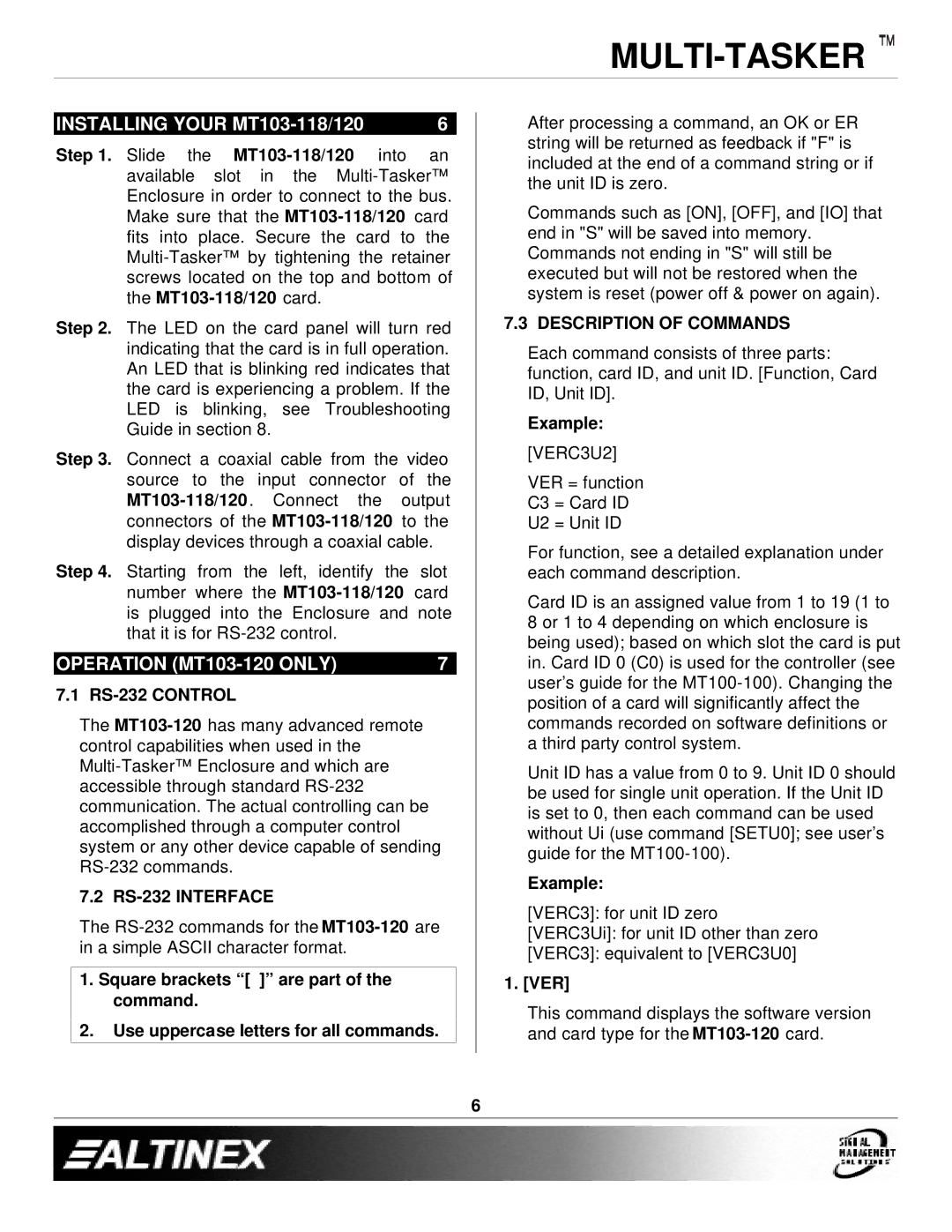
INSTALLING YOUR | 6 |
Step 1. Slide the
Step 2. The LED on the card panel will turn red indicating that the card is in full operation. An LED that is blinking red indicates that the card is experiencing a problem. If the LED is blinking, see Troubleshooting Guide in section 8.
Step 3. Connect a coaxial cable from the video source to the input connector of the
Step 4. Starting from the left, identify the slot number where the
OPERATION | 7 |
7.1 RS-232 CONTROL
The
7.2 RS-232 INTERFACE
The
1.Square brackets “[ ]” are part of the command.
2.Use uppercase letters for all commands.
After processing a command, an OK or ER string will be returned as feedback if "F" is included at the end of a command string or if the unit ID is zero.
Commands such as [ON], [OFF], and [IO] that end in "S" will be saved into memory. Commands not ending in "S" will still be executed but will not be restored when the system is reset (power off & power on again).
7.3 DESCRIPTION OF COMMANDS
Each command consists of three parts: function, card ID, and unit ID. [Function, Card ID, Unit ID].
Example:
[VERC3U2]
VER = function
C3 = Card ID
U2 = Unit ID
For function, see a detailed explanation under each command description.
Card ID is an assigned value from 1 to 19 (1 to 8 or 1 to 4 depending on which enclosure is being used); based on which slot the card is put in. Card ID 0 (C0) is used for the controller (see user’s guide for the
Unit ID has a value from 0 to 9. Unit ID 0 should be used for single unit operation. If the Unit ID is set to 0, then each command can be used without Ui (use command [SETU0]; see user’s guide for the
Example:
[VERC3]: for unit ID zero
[VERC3Ui]: for unit ID other than zero
[VERC3]: equivalent to [VERC3U0]
1. [VER]
This command displays the software version and card type for the
6
